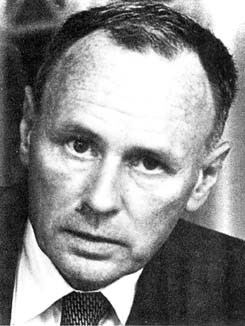Name Wilhelm Magnus | Role Mathematician | |
 | ||
Awards Guggenheim Fellowship for Natural Sciences, US & Canada Books Combinatorial group theory, Hill's Equation, The History of Combinat, Noneuclidean tesselations and their, Discrete Groups | ||
Wilhelm Magnus (February 5, 1907, Berlin, Germany – October 15, 1990, New Rochelle, NY) was a German American mathematician. He made important contributions in combinatorial group theory, Lie algebras, mathematical physics, elliptic functions, and the study of tessellations.
Contents

Biography
In 1931, Magnus received his PhD from the University of Frankfurt, in Germany. His thesis, written under the direction of Max Dehn, was entitled Über unendlich diskontinuierliche Gruppen von einer definierenden Relation (der Freiheitssatz).
Magnus was a faculty member in Frankfurt from 1933 until 1938. He refused to join the Nazi Party and, as a consequence, was not allowed to hold an academic post during World War II. In 1947 he became a professor at the University of Göttingen.
In 1948 he emigrated to the United States to collaborate on the Bateman Manuscript Project as a co-editor, while a visiting professor at the California Institute of Technology. In 1950 he was appointed professor at the Courant Institute of Mathematical Sciences, in New York University. He stayed there until 1973, when he moved to the Polytechnic Institute of New York, before retiring in 1978. Among his doctoral students are Joan Birman, Martin Greendlinger, Edna Grossman, Herbert Keller, and Seymour Lipschutz.
